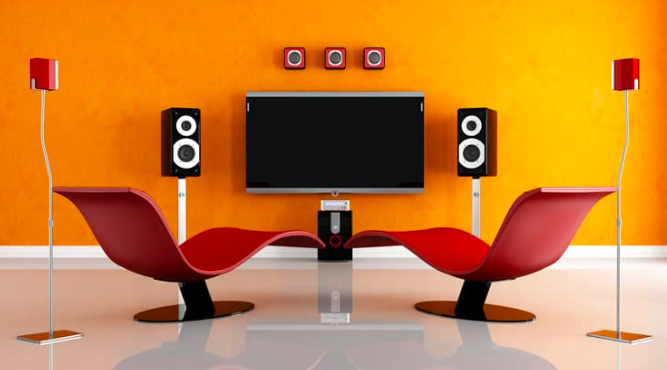Have you ever been to a concert where the sound just wasn’t right? Maybe it was a hollow echo or a garbled mess of noise. This is why acoustics are crucial. They determine how sound travels and impacts your ears. In venues or homes, good acoustics can make or break an experience. Today’s blog will show you how to maximize space for the best acoustic performance. Whether you’re hosting large events or setting up a cozy home theater, these insights will improve your sound quality.
Understanding Room Acoustics
Before we jump into optimizing, it’s essential to understand how room acoustics work. Sound behaves differently in various spaces due to reflections, absorption, and diffusion. When sound waves hit a surface, they can reflect, be absorbed, or scatter. Each of these behaviors affects the sound quality within the room.
For example, hard surfaces like tile floors and glass windows promote sound reflection, creating echoes. On the other hand, soft materials like carpets and cushions absorb sound, reducing echo. The key is finding the right balance. You want reflections to help the sound fill the room without becoming overwhelming. The size, shape, and materials of a room all play a part in its acoustics.
Choosing the Right Location
Location is the first step in optimizing your space for acoustics. Consider the purpose of your room. Are you planning a music studio, a conference hall, or a home theater? Each use case has different requirements. Pick a room with minimal external noise interference. Rooms with fewer windows and thicker walls are ideal. Also, aim for a room shape that avoids parallel walls. Parallel walls can create standing waves, resulting in uneven sound distribution.
Once you’ve chosen your location, consider its current furnishings. Heavy curtains can block sound from leaving or entering the room. Rugs and furniture can also impact sound quality. Remember, your goal is to find a space that naturally supports sound clarity.
Using Acoustic Panels
Acoustic panels are your best friends when it comes to optimizing room acoustics. These panels absorb sound, reducing echoes and improving clarity. They’re especially useful in spaces with hard surfaces. You can find acoustic panels in various styles and colors, allowing them to blend with your decor.
Position your panels strategically. Place them on walls where sound reflections are strongest. Corners are another critical area, as they often contribute to bass buildup. Additionally, consider ceiling panels if your room has high ceilings. They can help manage reflections from above, creating a more balanced sound environment.
The Importance of Furniture Arrangement
Believe it or not, the way you arrange furniture can significantly impact acoustics. For instance, placing bookshelves or large furniture pieces along the walls can help diffuse sound. This diffusion reduces the likelihood of echoes and promotes even sound distribution.
Avoid large, bare surfaces that could reflect sound directly back to the source. Sofas, chairs, and other upholstered furniture can serve as natural absorbers, helping to manage sound reflections. Additionally, ensure that seating areas are placed at optimal distances from speakers or sound sources. This positioning ensures that listeners receive balanced sound from all directions.
Incorporating Soft Furnishings
Soft furnishings like curtains, cushions, and rugs are more than just decor—they play a vital role in acoustic performance. These items absorb sound, reducing unwanted reflections and echoes. In rooms with hard floors, large area rugs can significantly improve acoustics by dampening reflections.
Consider using heavy curtains to cover windows, which can otherwise reflect sound and cause distortion. Cushions and throws can also be strategically placed to absorb sound waves. By incorporating these soft elements, you can create a space that supports clear and pleasant acoustics.
Soundproofing Your Space
Soundproofing is another crucial element to consider, particularly if you want to prevent sound from escaping or entering your space. This aspect is especially important in shared buildings or close-knit neighborhoods. Soundproofing materials like mass-loaded vinyl, soundproof curtains, and weatherstripping for doors and windows can be effective.
The aim is to create a barrier that prevents sound transmission. While soundproofing can be a more involved process, it’s worth the effort for spaces dedicated to music, theaters, or event planning services. These environments benefit significantly from a controlled acoustic atmosphere.
Evaluating and Adjusting
Once you’ve implemented these optimizations, take time to evaluate your space. Sit in different parts of the room and listen. Are there areas where sound is clearer or muddled? Make note of any issues and adjust accordingly. You might need to reposition acoustic panels, rearrange furniture, or add more soft furnishings.
Remember, optimizing acoustics is an ongoing process. As you use your space, you’ll gain insights into what works best. Don’t hesitate to experiment and make changes as needed. The goal is to achieve a sound environment that enhances whatever purpose your room serves.
Reaping the Benefits
With optimized acoustics, you can enjoy a range of benefits. Music sounds crisper, conversations are clearer, and presentations resonate more effectively. Whether you’re hosting an event, creating content, or simply enjoying entertainment, great acoustics make a difference.
An optimized space not only enhances the experience for you but also for anyone who shares the space with you. Clients, guests, or family members will appreciate the attention to detail and the superior sound quality your space offers.
Engaging with Community Experts
If you’re serious about maximizing your acoustic performance, consider engaging with community experts or hiring professionals. Acousticians and audio engineers offer valuable insights and can tailor solutions to your specific space needs. They can provide advanced strategies and equipment recommendations to elevate your acoustics further.
Joining online communities or forums focused on acoustics can also be beneficial. Fellow enthusiasts often share tips, experiences, and reviews of products they’ve tried. Engaging with others who share your interest can provide new perspectives and ideas.
Conclusion
Maximizing space for optimal acoustic performance is more than just a technical exercise; it’s about enhancing experiences. Whether you’re a musician, an event planner, or someone who simply loves great sound, these strategies can transform your space. By understanding and implementing the principles of acoustics, you can create an environment where sound is not just heard but felt in its full richness and depth. For those who want to explore further, countless resources and communities await your engagement.










